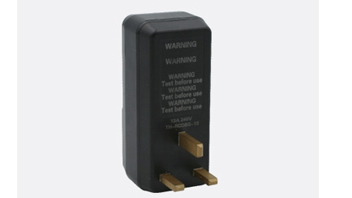In modern society, with the widespread use of various electrical devices, electrical safety is of utmost importance. The RCD Plug (Residual Current Operated Protective Plug), as a crucial electrical safety device, can effectively prevent electric shock accidents and electrical fires caused by leakage. Its safety standards and certifications play an indispensable role in ensuring product quality and usage safety.
I. International Safety Standards
1.IEC 61008 Standard:The IEC 61008 series of standards developed by the International Electrotechnical Commission (IEC) are important guidelines in the RCD field. This standard specifies in detail the relevant requirements for residual current operated circuit breakers without over - current protection (RCCB) for household and similar uses. In terms of the design, manufacture, and testing of RCD Plugs, the IEC 61008 standard requires products to have precise residual current detection capabilities. For example, it stipulates the accurate operating range of residual operating current for different types of RCD Plugs. Generally, the residual operating current of household RCD Plugs is usually 30mA. This means that when the leakage current in the circuit reaches or exceeds 30mA, the RCD Plug should quickly cut off the power supply to protect people from the risk of electric shock. At the same time, the standard also strictly regulates aspects such as the product's resistance to mechanical shock and electrical insulation performance, ensuring the reliability of the product in various complex environments.
2.IEC 61009 Standard:The IEC 61009 standard, which complements IEC 61008, sets specifications for residual current operated circuit breakers with over - current protection (RCBO) for household and similar uses. This standard has more comprehensive requirements for RCD Plugs. In addition to covering the residual current operation protection function, it also includes regulations on over - current protection characteristics. It requires that the RCD Plug can also cut off the circuit in a timely manner when detecting over - current situations such as overload or short - circuit, preventing electrical equipment from being damaged due to excessive current, and further enhancing the safety of the electrical system. In practical applications, RCD Plugs that meet the IEC 61009 standard can better adapt to complex electrical environments and provide comprehensive protection for electrical equipment in households and small commercial premises.
II. Major Certification Bodies and Certification Processes
♦UL Certification:The certification of Underwriters Laboratories (UL) in the United States is highly recognized globally. For an RCD Plug to apply for UL certification, first, the manufacturer needs to submit detailed product information, including product design drawings, working principle descriptions, component lists, etc. Professional engineers from UL will conduct a strict review of this information to evaluate whether the product meets relevant US national standards and UL's own safety requirements. After passing the review, samples will be selected for a series of laboratory tests, including electrical performance tests, mechanical performance tests, fire - resistance performance tests, etc. Only when all test items are successfully passed can the product obtain the UL certification mark. This certification mark represents that the product has met the strict safety standards of the US market, enabling the RCD Plug to be widely sold and used in the US market.
♦CE Certification:In the European market, CE certification is a necessary pass for RCD Plugs to enter EU countries. The CE certification process is relatively complex. It requires manufacturers to conduct self - assessments of products to ensure that they meet relevant EU directives and harmonized standards, such as the Low Voltage Directive (LVD) and the Electromagnetic Compatibility Directive (EMC). Manufacturers need to prepare detailed technical documents, including information on product design, manufacture, testing, etc. Subsequently, the product may need to pass the tests and reviews of designated institutions to verify whether it meets the requirements of CE certification. Once CE - certified, the product can be affixed with the CE mark, indicating that the RCD Plug complies with relevant EU regulations on safety, health, and environmental protection, and can be freely circulated among EU member states.
III. Importance of Certification
a.)Ensuring Consumer Safety:RCD Plugs that have undergone strict certification have been verified in many aspects for their safety. When consumers purchase and use RCD Plugs with certification marks, they can safely apply them to various electrical devices, reducing the risk of safety accidents caused by electrical faults such as leakage. For example, using a certified RCD Plug to connect electrical appliances such as kettles and microwave ovens in the home kitchen can effectively protect family members from electric shock and provide a reliable guarantee for household electrical safety.
b.)Regulating Market Order:Safety standards and certification mechanisms are like a “filter” in the market. Only RCD Plug products that meet the standards and pass the certification can enter the market for sale. This mechanism effectively curbs the circulation of unqualified products, avoiding potential safety hazards and market chaos caused by inferior products flooding the market. It prompts manufacturers to produce strictly in accordance with the standards, improve product quality, and promote the healthy development of the entire RCD Plug industry.
The safety standards and certifications of RCD Plugs are important means to ensure electrical safety and regulate the market. Whether it is the strict requirements of international standards or the professional certification processes of major certification bodies, they all provide reliable safety guarantees for consumers, allowing us to enjoy the convenience brought by electrical devices without worrying about potential safety risks.

GET A QUOTE